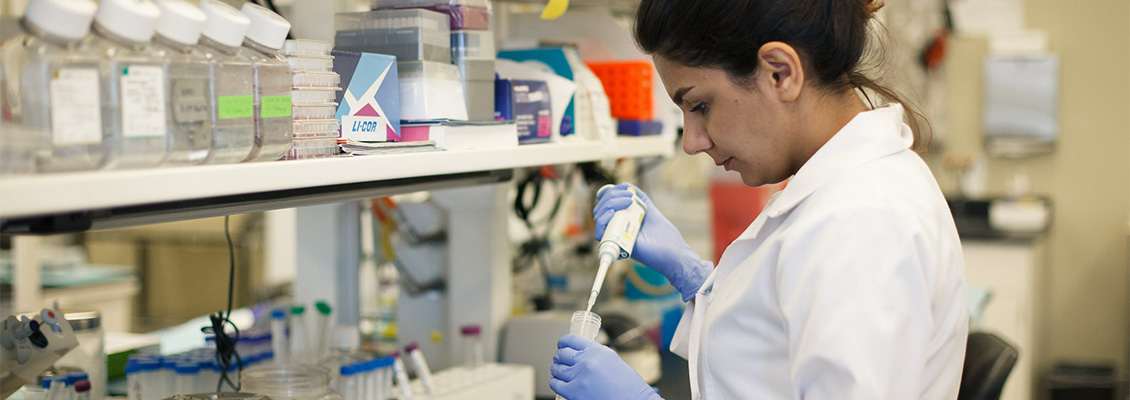Biochemistry

The Division of Biochemistry in the Department of Biology and Biochemistry at the University of Houston focuses on the study of the biochemistry and biophysics of living systems. Our research activities are highly inter- and multi-disciplinary which translates into graduate training at the disciplinary interfaces. Current research strengths in our Division fall into four themes:
Structural and Computational Biology/Biophysics
This theme includes the elucidation of the three dimensional structures of biological molecules and the nature of their interactions with natural and designed ligands, mechanisms of biomolecular function at the single molecule level, computational studies of protein structure and function, computer-aided drug design, theoretical biophysics, synthetic biology, and biotechnology. Targets for some of these studies include those important for the development of countermeasures against biological threat agents including botulinum and cholera toxins. Other researchers in this theme study protein transport channels, cell adhesion factors, protein biosynthesis machinery, nucleic acid microarrays, and RNA structure, function, and detection.
Microbiology
Genomics, membrane transport, quorum sensing and the basis of virulence are key areas of interest. The University has a next generation sequencing system (Solexa) that allows rapid re-sequencing of known bacterial genomes, comparison of closely related genomes, and transcriptional analysis. Software for rapid analysis of these types of data has been and is being developed. Comparisons of Streptococcus genomes are revealing the basis of virulence. Studies of Bacillus genomes are teaching us how spores of these organisms become highly resistant to various stresses, and how asymmetry is generated during development. Studies of transcription are revealing how gene expression is regulated temporally and spatially. In this regard, the role of Rho termination factor in global regulation and the response of bacteria to high levels of background radiation are of special interest. Electrophysiological techniques are used to decipher the molecular mechanisms of pore-forming proteins from a variety of organisms, with special emphasis on translocons used for the assembly of adhesins and pili needed for pathogen infections, and on porins involved in the uptake of antibiotics and extracellular signals controlling virulence.
Enzymology and Signaling
Multi-facet approaches are employed by several faculty members to delineate the structures, reaction mechanisms, and regulations of a wide range of enzymes essential to redox reactions, signal transductions, drug activations, detoxifications, gene regulations, translation, etc. These research laboratories are well equipped for biochemical, biophysical, computational, and molecular biological studies. A recently created focus is single-molecule detection of the protein synthesis process.
Nucleic Acids Biochemistry and Genomics
Research in this area is at the interface of chemistry and biological sciences. Array hybridization and mass spectrometric techniques are employed for bacterial and viral detection in response to needs generated by the biodefense and medical diagnostic communities. This includes ongoing efforts to develop novel Microarray BIOCHIP technologies and sensors utilizing retroreflectors. Single molecule methodologies are being employed to study complex systems such as ribosomes as well as the dynamics of model RNAs. Novel technologies for the synthesis of large quantities of siRNAs are being evaluated. Unique graphic capabilities provided by the Texas Learning and Computation Center are being used to understand the early history of the translational machinery and computational methods are being utilized to compare nucleic acids and to design hybridization probes of various types.
History of the Former Department of Biochemical and Biophysical Sciences (1960s–1994)